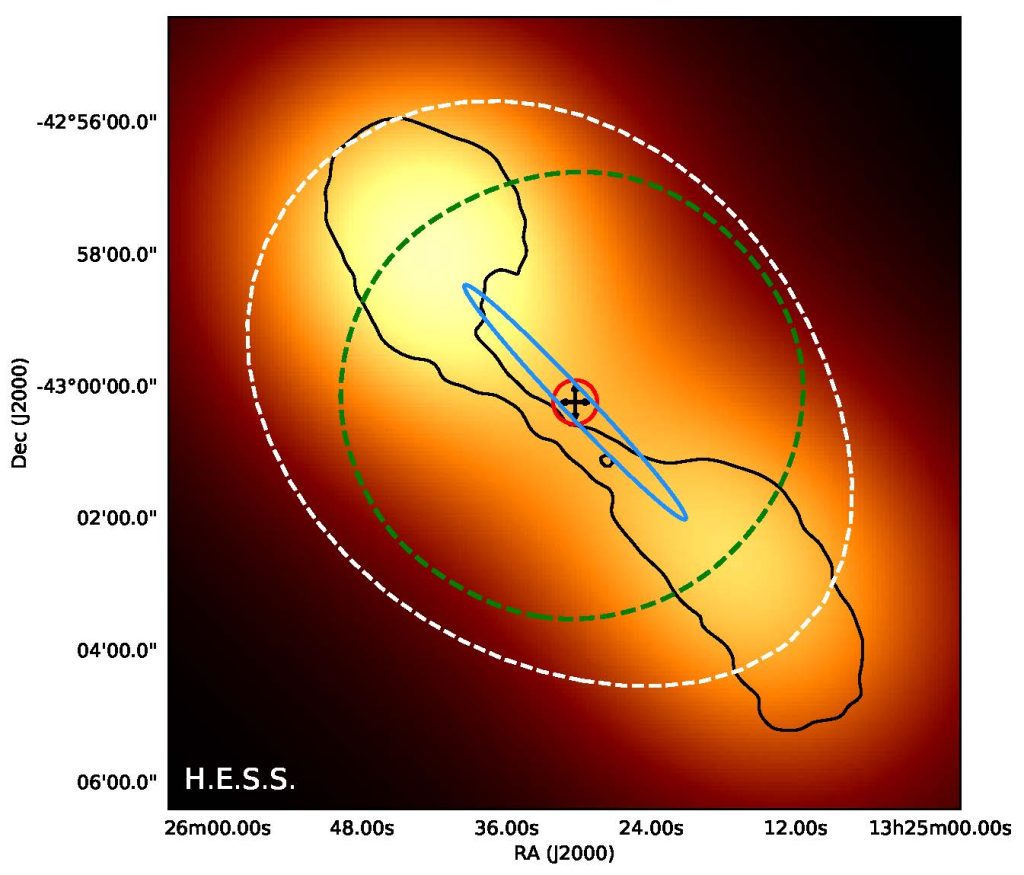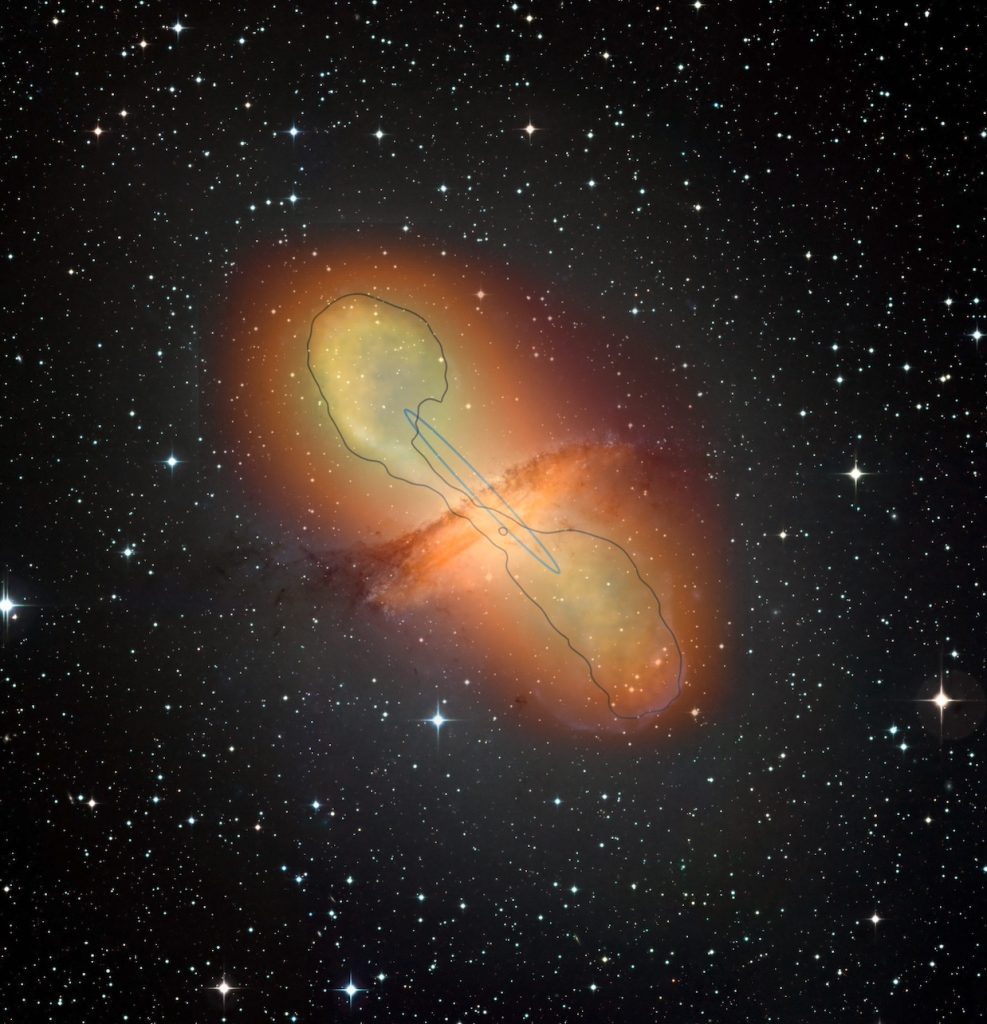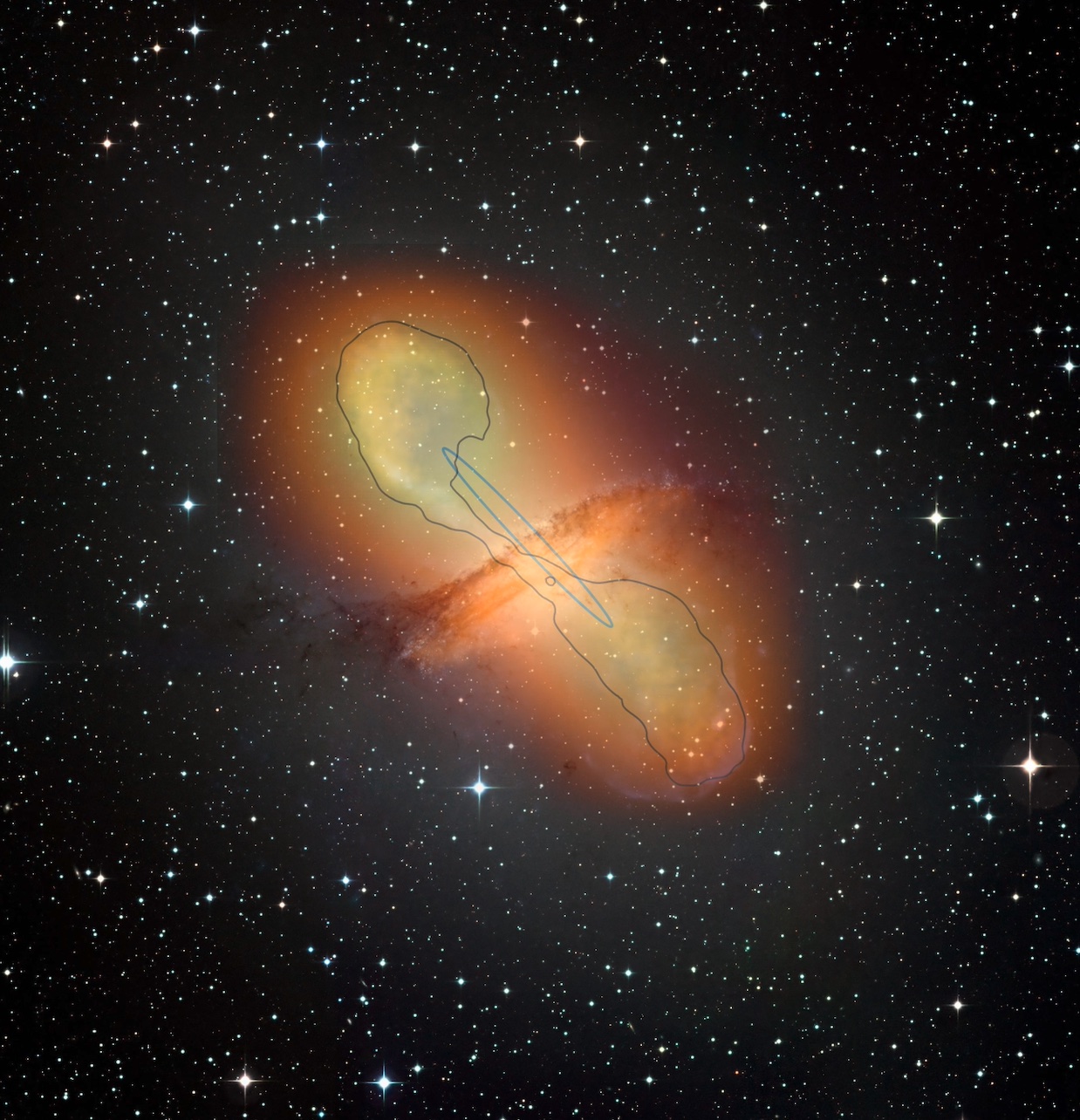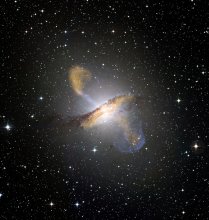Centaurus A: a gamma emission several thousand light-years away
In Namibia, the telescopes of the H.E.S.S. experiment, to which the LAPP contributes, have been indirectly detecting cosmic radiation for more than ten years. Using specific analysis techniques, the H.E.S.S. collaboration has demonstrated that the very high energy gamma emission from the nearby radio galaxy Centaurus A extends over several thousand light years, along the plasma jet. These results are published in the journal Nature on June 18, 2020.
Centaurus A is a giant elliptical galaxy and the closest radio galaxy to Earth, at a distance of about 11 million light years. It is one of the most studied objects in the southern sky because of its spectacular appearance due to an opaque band of dust in its central part. In addition to being close by, this galaxy ejects matter streams, or jets that are visible from the side, making them easier to observe.
Among the so-called active galaxies, only 10% exhibit highly collimated plasma jets, i.e. they can extend over hundreds of thousands of light-years for the most intense sources, thus largely exceeding the size of the galaxy itself. The most credible hypothesis is that the accretion of matter on the supermassive black hole at the centre of the galaxy is at the origin of the formation of these plasma jets.
The X-ray emission observed over distances of a few kiloparsecs from these same sources is much debated, as several microscopic processes may be at the origin. An X-ray synchrotron emission at these energies requires very energetic electrons (of the order of Teraelectronvolt) that cannot survive very long because of their important energy losses; we must therefore imagine a mechanism allowing these electrons to be continuously re-accelerated along the jet.
The H.E.S.S. observatory, located in Namibia, which operates in the field of very high energy gamma rays, about 1,000,000 times higher in energy than X-rays, observed Centaurus A for more than 200 hours and was able to demonstrate a TeV emission that was also extensive and correlated with the X-radiation of the jets.

For the first time, there is experimental evidence of particle acceleration all along the jet, and not only at its base as previously thought.
Since Centaurus A has a jet comparable to that of other radio galaxies, these observations have important implications for the understanding of cosmic gamma-ray emitters, indicating in particular that radio galaxies are likely to be very efficient electron accelerators. Because of their large number, these could thus, even if they are difficult to detect individually, collectively contribute very significantly to the redistribution of energy in the intergalactic environment. In particular, this would result in a significant contribution to the extragalactic gamma background.
« At the LAPP, we performed cross-analyses of the observed data to verify the relevance of the results but also the reliability of the instruments, explains David Sanchez, researcher in the HESS team, to fully understand the performance of our instruments, we also participated in the development of a simulation that fits the reality of the sky, the position of the observation. Being as close as possible to the instrument allows for greater precision. ».
Link to the article: https://rdcu.be/b40X5




